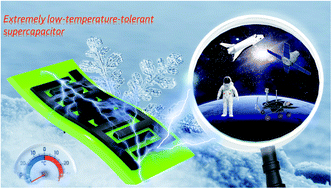Supercapacitors operated at extremely low environmental temperatures
Abstract
Curiosity about the mysteries of outer space has driven humans to organize space exploration. Space missions and polar-region expeditions require the use of new energy storage technologies with excellent tolerance to extremely low temperatures and the capability to operate efficiently for extended periods of time. In this context, there is an urgent need to explore new approaches and concepts that address the critical related challenges, gaining a mechanistic understanding of new electrochemical reactions and phenomena in diverse scenarios. This paper presents an overview of how electrode and electrolyte materials in supercapacitor (SC) cells operate at extremely low temperatures. The critical challenges related to engineering such SCs and the major breakthroughs that have overcome these problems are presented. In addition, the effects of different electrolytes (e.g., aqueous, organic, and ionic liquid (IL) examples) on ion accessibility, interfacial charge transfer, and transport kinetics in SC cells under cold conditions are discussed. This review is expected to contribute to the development of high-performance SC cells that can function at extreme temperatures via providing insight into key challenges and guidelines that could facilitate future work.

- This article is part of the themed collection: Journal of Materials Chemistry A Recent Review Articles


 Please wait while we load your content...
Please wait while we load your content...